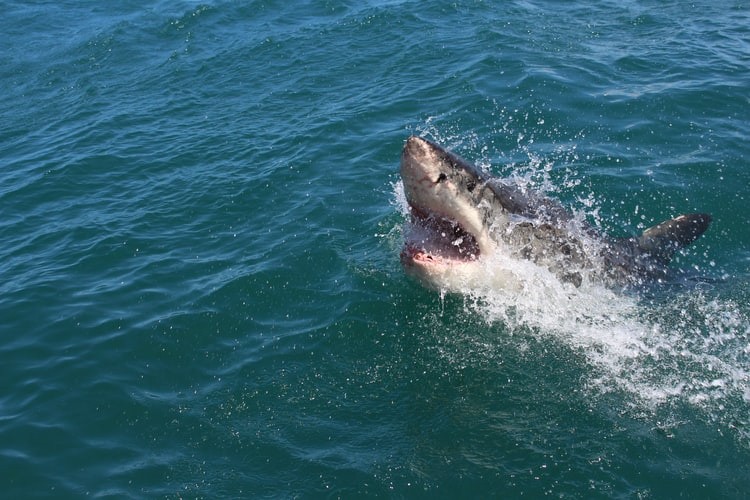A 63-year-old former New York City fashion executive, Julie Dimperio Holowach, died in a shark attack in Maine on Monday while swimming with her daughter. Authorities said that Holowach is the first confirmed human death by a deadly shark attack in Maine's history.
But why do sharks attack humans? Are they really interested in eating humans, or was it just a mistake? Also, how to avoid shark attacks?

Read: Surfer in Santa Cruz Dies in Northern California's First Fatal Shark Attack in 16 Years
Woman killed in a shark attack in Maine waters
Holowach was about 20 yards offshore the Bailey Island on Monday afternoon when suddenly she was attacked by a great white shark, says the Maine Department of Marine Resources (DMR).
She was rescued by nearby kayakers who witnessed the incident and immediately carried her to the shore, where she was declared dead by emergency responders. Her daughter, who was swimming with her, was safe and without any physical injuries.
Maine authorities confirmed on Tuesday, July 28, that a great white shark was responsible for the incident, although they noted that these types of incidents rarely happen.
DMR Commissioner Patrick Keliher said that Holowach's death is the only confirmed fatality in Maine waters from a shark attack. The last shark attack they had was ten years ago by a porbeagle and not a great white shark.
According to the women's fashion publication WWD, Holowach, who was using her maiden name, retired in 2016 after a career with VF Corp. She worked as the president of special markets for Liz Claiborne and later became the president of Kipling North American.
Keliher added that although great white shark attacks only happen rarely, people should still be cautious. He said that a warning sign that sharks could be present is if there are large schools of fish or seals in the water.
"Seals feed on fish, and sharks feed on seals," Keliher said. The authorities urged people to avoid the Casco Bay region and the waters near Bailey Island, as well as schools of fish or a congregation of seals, because there may be a predator lurking waiting for their prey.
According to the National Oceanic and Atmospheric Administration, great white sharks on the Atlantic spend most of their time in coastal and offshore waters along the continental shelf and around the Newfoundland and Florida islands.
Why do sharks attack?
People are afraid of sharks because of their large size and scary teeth. But why do they attack humans just like what happened to Holowach?
According to diver Gary Adkison, 90% of the shark incidents are mistakes committed by the sharks because they assume that humans are one of their usual preys- sea turtles, seals, and fish.
As predators, sharks are on top of the food chain, and they eat large amounts of meat to power their large, muscular bodies. However, humans do not provide enough high-fat meat for sharks; that is why they are out of their menu.
Aside from confusion, some sharks attack after being provoked by humans. For example, nurse sharks lie still on the ocean floor, but for some reason, a diver thinks it is a good idea to touch the animal's tail. Many divers have been taught that it is better to keep their hands to themselves to avoid confrontations with the sharks.
Statistically, shark attacks are divided into two categories: the unprovoked and provoked attacks.












